Midwives in 19th Century America
Childbirth in the American Colonies
Childbirth in colonial America was a difficult and sometimes dangerous experience for a woman. Since the typical mother gave birth to between five and eight children, her lifetime chances of dying in childbirth ran as high as 1 in 8. Death in childbirth was sufficiently common that many colonial women regarded pregnancy with dread.
Image: American pioneer birth scene
Gustave Joseph Witkowski, 1887
In addition to her anxieties about pregnancy, an expectant mother was filled with apprehensions about the death of her newborn child. In the healthiest seventeenth century communities, one infant in ten died before the age of five. In less healthy environments, three children in ten died before their fifth birthday.
18th Century Midwives
In colonial America, the typical woman gave birth to her children at home. While female relatives and neighbors clustered at her bedside to offer support and encouragement, most women were assisted in childbirth by a midwife. Most midwives were older women who relied on the practical experience they received in delivering many children. Skilled midwives were highly valued.
Communities tried to attract experienced midwives by offering a salary or a house rent-free. In addition to assisting in childbirth, midwives helped deliver the offspring of animals, attended the baptisms and burials of infants, and testified in court in cases of bastardy. During labor, midwives administered no painkillers, except for alcohol.
Women were merely advised to “arm themselves with patience” and prayer and to try, during labor, to restrain “those dreadful groans and cries which do so much discourage their friends and relations that are near them.” After delivery, new mothers were often treated to a banquet. At one such event, visitors feasted on “boil’d pork, beef, fowls, very good rost beef, turkey-pye, [and] tarts.”
Women from well-to-do families were then expected to spend three to four weeks in bed convalescing. Their attendants kept the fireplace burning and wrapped them in a heavy blanket in order to help them sweat out “poisons.” Women from poorer families were generally back at work in one or two days.
19th Century Midwives
Home was still the place of birth in the early 19th century, and the average American woman gave birth to six children, not including children lost to miscarriages and stillbirths. Only women midwives attended women during childbirth. (In later years there were male midwives.) These women were skilled in assisting the woman by providing comfort measures, nourishment and nurturing, and by patiently waiting for nature to take its course without undue interference with the normal process of labor and birth.
Midwives were local women, usually with children of their own, who had learned midwifery as apprentices, as did many 19th century physicians. Observing and helping with deliveries honed their skills and exposed them to the variety of problems they would face when working on their own. For their work, midwives might receive modest compensation, however, they might be paid with a chicken or household goods.
Midwives had a clear and important role in the 19th century. Laurel Thatcher Ulrich explored this in her Pulitzer Prize winning book: A Midwife’s Tale: The Life of Martha Ballard, based on Ballard’s diary that was written from 1785 through 1812. For 27 years, Ballard chronicled her midwifery career, during which she delivered 996 babies.
Midwives attended the majority of births throughout most of the 19th century, especially in the American South. Plantations usually had a slave who acted as a midwife to both black and white mothers. As time went on the majority of midwives were black. The further north, the more white midwives there were serving both the upper and lower classes. If she was a paid community employee she was given a house but could not refuse to help anyone who called upon her.
It was not easy to be a midwife. Midwives dealt with births that could go horribly wrong and seldom progressed easily or rapidly. Experienced midwives might administer ergot fungi or make the woman walk about to speed an intransigent birth along. Needless to say, complications, easily handled today, often spelled death for the mother, and possibly the infant.
If the mother was unmarried, the midwife served as her confessor. If, in the throes of labor, the woman screamed out the father’s name, he was forced to marry her. It was believed that at that moment of pain, the woman would most certainly be telling the truth. Many reluctant men were brought to the altar a few days later.
Anesthesia
In 1847, the pain-relieving and anesthetic properties of ether and chloroform were discovered and used in America for childbirth for the first time. This began a new era in childbirth methods. Mothers could be relieved of pain in childbirth. This discovery led to increasing medical dominance in obstetrics, which had been almost exclusively in the hands midwives.
It also led to medical and moral controversy that lasted for several decades. On one hand, women were destined to suffer due to the “curse of Eve” and were expected to experience pain during childbirth. On the other hand, humanitarians and the medical society believed that there were very good moral and technological reasons for controlling or eliminating pain in childbirth. Researchers have noted that upper-class mothers had a certain ambivalence towards motherhood. This influenced their attitudes toward the use of chloroform and the process of childbirth.
Birth Control in the 19th Century
Mechanical means were the most common birth control methods in the 19th century. These included: withdrawal by the male; melting suppositories designed to form an impenetrable coating over the cervix; diaphragms, caps, or other devices that were inserted into the vagina over the cervix and withdrawn after intercourse; douching after intercourse designed to kill or drive out the sperm; condoms, and a variety of rhythm methods. There were also potions and pills that were extremely dangerous for the mother as well as the fetus.
The rhythm methods used in the 19th century (calculating the woman’s fertile period and abstaining during that period) were largely ineffective because the recommendation was that women abstain during their menstruation period or just before it. Women who relied on the rhythm method were actually abstaining from sexual activity when they were least fertile and having sex when they were most likely to conceive.
Abortion, while controversial and considered largely immoral, was relatively common. It is estimated that in the 1840s, one in every thirty pregnancies was terminated by abortion. Methods ranged from surgery, poisons, home remedies from plants and herbs, and mechanical means such as striking the woman’s abdomen repeatedly.
Abortion was considered illegal in the United States by 1880 in most cases, with the exception being those considered “necessary to save the life of the woman.” Caucasian urban women from affluent society had greater access to abortion by a physician. Rural and non-white women were much more likely to depend on herbal or mechanical means.
None of the birth control methods of the 19th century (aside from infanticide and abortion) were particularly effective and none of them were new. Women would sometimes nurse their children for up to two years, which would prolong their infertile period. Withdrawal by the male, douching and vaginal suppositories were common in the 19th century. In 1838 condoms and diaphragms were produced with vulcanized rubber, but they were to be used to prevent venereal disease.
Kate Chopin’s Childbirth Experiences
Author Kate Chopin gave birth to six children in six years. Unconventional physicians attended the births of her children, and she chose to give birth in the most modern way, with the use of chloroform. Most American physicians resisted using the drug, and women were forced to “bring forth children in sorrow”, as written in the Bible. It was believed that the pain of childbirth would make women love their children more.
During the 1800s, it was taboo to write negatively about pregnancy and childbirth because it was largely lauded as the most noble and valuable contribution of women to their husbands and to society. Addressing the clinical details and suffering of childbirth was unacceptable at that time, so it remained largely unwritten.
However, Kate Chopin wrote the following account of the birth of her first child on May 22, 1871:
I can remember yet that hot southern day on Magazine Street in New Orleans. The noises of the street coming through the open windows, that heaviness with which I dragged myself about; my husband’s and mother’s solicitude; old Alexandrine the quadroon nurse with her high bandana tignon, her hoop-earrings and placid smile; old Dr. Faget; the smell of chloroform, and then waking at 6 in the evening from out of a stupor to see in my mother’s arms a little piece of humanity all dressed in white; which they told me was my little son! The sensation with which I touched my lips and my fingertips to his soft flesh only comes once to a mother. It must be the pure animal sensation: nothing spiritual could be so real – so poignant.
The most effective form of birth control during the 19th century was abstaining from sexual intercourse, but this was not acceptable to most spouses. In 1881 Kate and Oscar Chopin lived apart while he was ill, and then she lived with her mother for several months after he returned. This was considered a form of birth control and was apparently effective for them.
Voluntary Motherhood
Attitudes about birth control changed rapidly after the mid 19th century. Early suffragists campaigned for voluntary motherhood during the 1870s. The term voluntary motherhood refers to the right of a woman to refuse to have sex in order to avoid pregnancy. However, at that time women did not have the right to refuse sex with their husbands, and the culture dictated that they always be sexually available to him.
Nineteenth-century feminists demanded gender-specific parenting rights. Challenging forced marital sex, involuntary motherhood and parental custody and guardianship laws, they demanded unilateral control to the woman. Voluntary motherhood, the right to choose when to procreate, the right to refuse sex, and maternal custody presumptions were the rightful solutions to these issues – because in parenting, the woman was the partner who had to bear the pregnancy and care for the child.
In her book Woman and the New Race (1920), Margaret Sanger wrote:
It is the essential function of voluntary motherhood to choose its own mate, to determine the time of childbearing and to regulate strictly the number of offspring. Natural affection upon her part, instead of selection dictated by social or economic advantage, will give her a better fatherhood for her children. The exercise of her right to decide how many children she will have and when she shall have them will procure for her the time necessary to the development of other faculties than that of reproduction. She will give play to her tastes, her talents and her ambitions. She will become a full-rounded human being. Thus and only thus will woman be able to transmit to her offspring those qualities which make for a greater race.
Midwives vs. Physicians
The practice of midwifery was largely unchanged until the late 19th century. Delivering babies became a medical specialty: the field of obstetrics. Male physicians introduced new techniques that interfered with the normal birth process and competed with midwives, who struggled to hold onto their profession and advance through education.
Some midwives became fearful of the competition and spoke out vehemently against physicians. Many of them did not have the same sensitivity or patience inherent to the traditional practice of midwifery. In their zest to use instruments and other maneuvers to speed up the birth process, which would shorten women’s suffering, physicians often caused much damage to women’s reproductive organs.
More and more individuals entered medical schools and specialized in obstetrics. To gain more clinical practice, they established lying-in hospitals or wards in major hospitals. Asepsis was unknown, so, with unclean hands and tools, physicians examined women and tended to the birth of their babies, leading to epidemics of puerperal fever, which caused thousands of maternal deaths.
Fortunately, many individuals contributed to understanding the cause of puerperal fever, including Ignaz Semmelweis, a renowned Hungarian physician; Oliver Wendell Holmes, an American physician; Louis Pasteur, a French scientist; and Joseph Lister, an English surgeon. By the end of the 19th century, germ theory was finally accepted, and the advent of anesthesia administered for pain in childbirth became desirable for many women who chose physicians as their birth attendants.
American midwives began to clamor for more education, but obstetricians fought hard against them. Schools for midwives were established in European cities, and European health care created a dual system by which midwives continued to attend normal births while physicians handled those with complications. This did not happen in the United States. American physicians fought hard against midwifery education, although it was strongly supported by public health reformers.
In the early 20th century, many midwives still practiced in rural, remote areas of the country and with inner city, poor populations. The next major push by American obstetricians was to move all births from homes to hospitals, where midwives were forbidden to practice.
In 1920, Dr. Joseph B. DeLee’s famous article, “The Prophylactic Forceps Operation,” was published in the American Journal of Obstetrics & Gynecology. His routine included heavy doses of narcotics and scopolamine, gas anesthesia during birth, forceps to drag the baby out, episiotomy, and pitocin after birth of the placenta. This routine could only be conducted in a hospital.
By the 1920s, the use of anesthesia in childbirth was almost universal. The practice of putting women to sleep during labor contributed to a shift from having children at home to having children in hospitals. In 1900, over 90 percent of all births occurred in the mother’s home. But by 1940, over half took place in hospitals and by 1950, the figure had reached 90 percent.
The substitution of doctors for midwives and of hospital delivery for home delivery did little in themselves to reduce mortality rates for mothers. It was not until around 1935, when antibiotics and transfusions were introduced, that a sharp reduction in the maternal mortality rate occurred. In 1900, maternal mortality was not much lower than it had been in the mid-nineteenth century. By World War II, however, death in childbirth had been cut to its present low level.
SOURCES
Childbirth in Early America
Kate Chopin: Childbirth and Birth Control in the 19th Century
Journal of Perinatal Education: Where Have All the Midwives Gone?
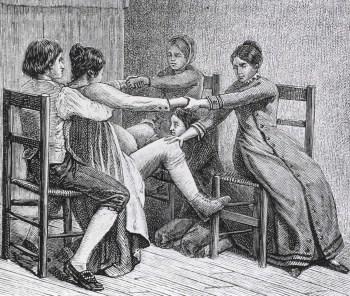
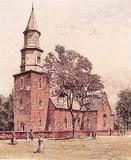

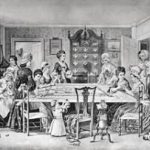

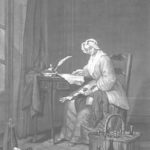
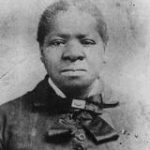
Well it certainly would have been much easier meeting a good woman for many of us single good men today back then with no trouble at all. And today unfortunately most women are just very pathetic altogether.
Well, it certainly would have been much easier meeting a good man with no trouble at all for many of us good single women if times were like they were back then. And today, unfortunately, some men are just very pathetic altogether.
HAHAHA Paul I find your comment HILARIOUS. I’m sure it has to be the women and not you, correct??
Paul, if you want a good woman like in the old days, I suggest you hire a maid and a cook, visit a prostitute, and rent the children.
If you’re really desperate, though, I suggest you marry a doormat. The plastic kind that sits in front of a door. That way every night you can look at it while wiping your feet on it and say, “Honey, I’m home.”
They were not doormats obviously! Tough as nails, did you not read the article? Women were also delivering babies as midwives. It is hard when we want to look at these things through modern lenses. The times were different altogether. Men and women were very aware of imminent death, but there was too much life to be lived to dwell on things. If your man did not run around and provided a woman was content much as if a women took care of hearth and home a man was content.
I didn’t say they were doormats. I said that’s what Paul should get, since he wants one.
This is very informative. I’m writing a story where 7 babies are born in an old west town. This article is just the information I need to make the story authentic.